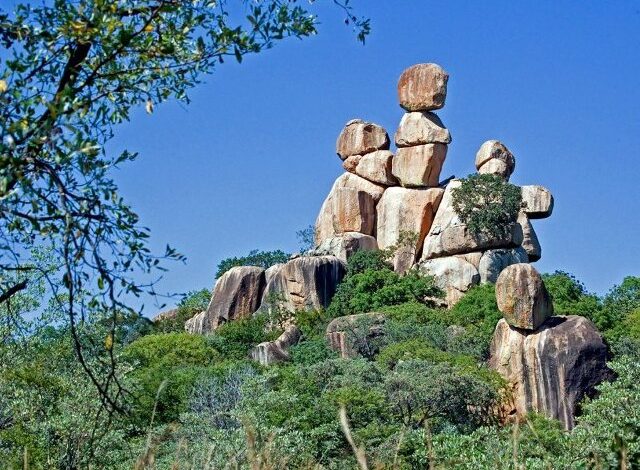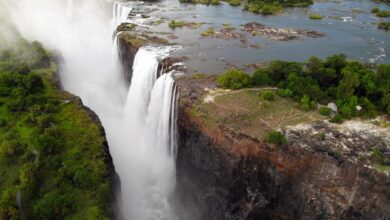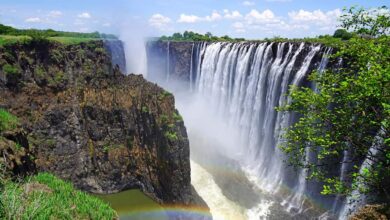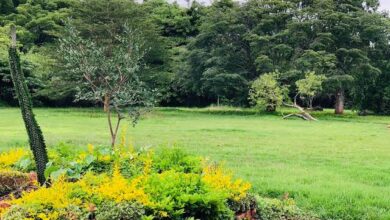Zimbabwe’s Most Beautiful Landscapes

Zimbabwe, nestled in southern Africa, boasts an array of stunning landscapes that captivate with their natural beauty and diversity. From majestic mountains to lush savannas and picturesque waterfalls, this country offers a rich tapestry of scenery that is both awe-inspiring and enchanting. Let’s explore some of Zimbabwe’s most captivating landscapes.
1. Victoria Falls
Undoubtedly Zimbabwe’s most famous natural wonder, Victoria Falls is a UNESCO World Heritage site and one of the largest waterfalls in the world. Locally known as “Mosi-oa-Tunya” (the smoke that thunders), the falls span the Zambezi River, creating a breathtaking cascade over 100 meters high and nearly 2 kilometers wide during the rainy season. Visitors can witness the sheer power and beauty of the falls from various viewpoints, and adventurous souls can even take a dip in the Devil’s Pool on the edge of the waterfall (seasonally).
2. Matobo Hills
Located near Zimbabwe’s second-largest city, Bulawayo, the Matobo Hills are a landscape of ancient granite kopjes (rocky outcrops) and stunning vistas. This UNESCO World Heritage site is renowned for its spiritual significance, historical rock art, and unique rock formations. The hills are also home to a diverse array of wildlife, including leopards, rhinos, and a significant population of black eagles. The Matobo Hills offer opportunities for hiking, rock climbing, and game viewing, all amidst a serene and ancient landscape.
3. Eastern Highlands
The Eastern Highlands stretch along Zimbabwe’s eastern border with Mozambique, offering a striking contrast to the country’s savanna plains. This mountainous region is characterized by rolling hills, deep valleys, and lush greenery. Highlights include:
- Nyanga National Park: Known for its stunning mountain scenery, waterfalls (such as the majestic Nyangombe Falls), and the scenic views from Mount Nyangani, Zimbabwe’s highest peak.
- Vumba Mountains: Famous for their botanical gardens, diverse flora, and birdlife, including rare species like the blue swallow and the endangered Swynnerton’s robin.
- Chimanimani Mountains: A haven for hikers and nature enthusiasts, with pristine forests, sparkling rivers, and unique rock formations.
4. Hwange National Park
As Zimbabwe’s largest national park, Hwange is renowned for its abundant wildlife and diverse landscapes. Spanning nearly 15,000 square kilometers, the park is home to over 100 mammal species, including the famous elephant herds, lions, and giraffes. Its varied terrain ranges from grasslands and woodlands to seasonal pans and shallow pans that attract wildlife during the dry season. Visitors can enjoy game drives, guided walks, and birdwatching amidst the natural splendor of Hwange.
5. Lake Kariba
Created by the damming of the Zambezi River in the 1950s, Lake Kariba is one of the world’s largest man-made lakes by volume. Its expansive waters, framed by the Zambezi Escarpment, offer spectacular sunsets and opportunities for fishing, boating, and wildlife viewing. The lake is home to abundant birdlife, including fish eagles and cormorants, as well as a thriving population of hippos and crocodiles.
Zimbabwe’s landscapes are as diverse as they are breathtaking, offering visitors a glimpse into the country’s natural splendor and rich biodiversity. Whether exploring the thunderous Victoria Falls, hiking the ancient Matobo Hills, or relaxing by the tranquil shores of Lake Kariba, each of these destinations reveals a different facet of Zimbabwe’s natural beauty. For travelers seeking adventure, wildlife enthusiasts, or those simply looking to immerse themselves in stunning scenery, Zimbabwe’s landscapes promise unforgettable experiences and lasting memories.




